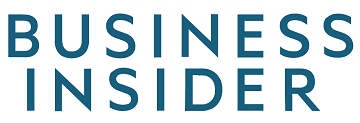Diversity and inclusion have become indispensable aspects of building a successful modern workplace. Research shows that embracing diversity and cultivating inclusion provides significant benefits for both employees and the bottom line. Here in Florida, many top employers are making diversity and inclusion central pillars of their workplace culture.
In this blog post, we’ll explore the key reasons why diversity and inclusion in the workplace are essential for any organization that wants to thrive in today’s highly competitive environment. Whether you operate in Florida or anywhere else, creating a diverse and inclusive workplace should be a top priority.
Why Workplace Diversity and Inclusion Are Important
Workplace diversity refers to the range of human differences present in a workplace, including race, gender, age, ethnicity, religion, sexual orientation, disability status, personality traits, educational background, and more.
Inclusion means ensuring all employees feel valued and respected and are given equal access to opportunities. It’s about appreciating these differences and allowing people from diverse backgrounds to contribute ideas and feel a sense of belonging.
Here are some of the top reasons diversity and inclusion in the workplace are key:
1. Drives Innovation
Companies with diverse teams are better positioned to serve diverse customers and stakeholders. They can draw from a wider range of viewpoints, experiences, and ideas that foster innovation.
A McKinsey study found that ethnically/culturally diverse companies were 33% more likely to outperform less diverse peers in profitability. Gender-diverse companies were 21% more likely to have above-average profitability.
2. Improves Talent Recruitment and Retention
Focusing on diversity and inclusion helps attract top talent from underrepresented groups. Today’s job seekers want to work for organizations that support diversity and foster an inclusive work environment where they can flourish.
Inclusive workplaces have 6.3 times higher employee retention rates. Employees feel welcomed rather than isolated. This dramatically reduces costly turnover.
3. Enhances Company Reputation
Companies regarded as industry leaders in diversity and inclusion benefit from an enhanced corporate brand. Stakeholders and customers expect businesses to promote diversity and inclusivity in their workforce and operations.
A diverse workforce and inclusive culture are key elements of strong corporate social responsibility. They demonstrate a commitment to ethics and values.
4. Strengthens Customer Insights
A diverse workforce with employees from different genders, races, ages, and backgrounds means better insights into the needs of a similarly diverse customer base. Marketing campaigns resonate more when informed by diverse perspectives.
5. Drives Financial Performance
There is a proven correlation between diversity and business results. Businesses with executive teams with a gender diversity score in the top quartile were 21% more likely to see above-average profitability than businesses in the bottom quartile.
Key Aspects of Diversity in the Workplace
Many important aspects of diversity create a richer workplace culture when embraced. Here are some key areas to focus on:
Gender Diversity
Gender diversity in the workplace refers to balanced representation between men and women. This includes ensuring women are empowered to pursue leadership roles and top management positions.
A study by the Peterson Institute for International Economics discovered that businesses with at least 30% female executives had a 15% higher chance of outperforming rivals with lower female representation.
Racial and Ethnic Diversity
Having racial and ethnic diversity means having employees from different races, nationalities, and ethnic minorities well-represented throughout an organization. It brings together different lived experiences.
The McKinsey study also showed that ethnic/cultural diversity was a key driver of outperformance, with the likelihood of financial outperformance being +35 percent higher in diverse versus less diverse companies.
Generational Diversity
Age diversity in the workplace refers to maintaining a good mix of younger and older employees. This allows for collaboration between employees with fresh perspectives and those with deep institutional knowledge.
Multigenerational teams create a dynamic exchange of ideas between generations. Younger workers can receive mentorship, while older workers can learn new skills and approaches.
Religious Diversity
A religiously inclusive workplace embraces people of different faith groups, including accommodating religious practices and holidays. This promotes understanding between people of different religions.
Sexual Orientation Diversity
LGBTQ inclusion refers to cultivating a positive, welcoming environment for lesbian, gay, bisexual, transgender, queer, and non-binary employees. This helps attract top talent from the LGBTQ community.
Disability Inclusion
Disability inclusion means both hiring persons with disabilities and providing them with the accommodations needed to help them thrive at work. ADA website compliance, assistive technologies, and inclusive company events are key.
Promoting Diversity and Inclusion in the Workplace
Simply having a diverse mix of employees is not enough to unlock the full benefits of diversity and inclusion. Organizations must take purposeful action to promote diversity, equity, and inclusion throughout all levels of the workplace.
Here are some best practices for effective inclusion in the workplace:
- Implement Unbiased Hiring Practices: Examining current hiring practices and taking steps to remove bias is crucial. Things like inclusive job descriptions, diverse interview panels, and structured interviews prevent discrimination.
- Offer Diversity and Inclusion Training: Training helps employees at all levels recognize their own biases. It also educates them on how to help create an inclusive workplace culture. Interactive workshops that explore workplace scenarios are ideal.
- Support Employee Resource Groups: Employee Resource Groups (ERGs) bring together employees with common backgrounds and experiences. Leadership should empower these groups and leverage their input.
- Promote Equitable Company Policies: Assess existing policies and procedures to ensure they promote equity, from family leave and remote work options to fair performance management and compensation practices.
- Celebrate Diversity and Model Inclusion: Leadership must fully embrace diversity and model inclusive behaviors. Highlight diverse role models from within the organization. Make diversity and inclusion central themes of company events and internal communications.
The Business Case for Workplace Diversity and Inclusion
Some organizations still struggle to gain executive buy-in for prioritizing diversity, equity, and inclusion efforts. However, the business case is quite compelling when you consider the data.
While creating a truly diverse and inclusive workplace requires commitment and concerted effort, it is absolutely vital for success in today’s global marketplace. Organizations that make diversity and inclusion central to their culture will pull ahead of those that fail to leverage the value of a diverse workforce.
If you need guidance on diversity and inclusion best practices for your Florida-based organization, contact The Norfus Firm’s DEI consultants today.
For more help giving your diverse workforce a positive work environment, please see the tips below.
Provided by CTG Tech, an IT company offering managed IT services in Texas



